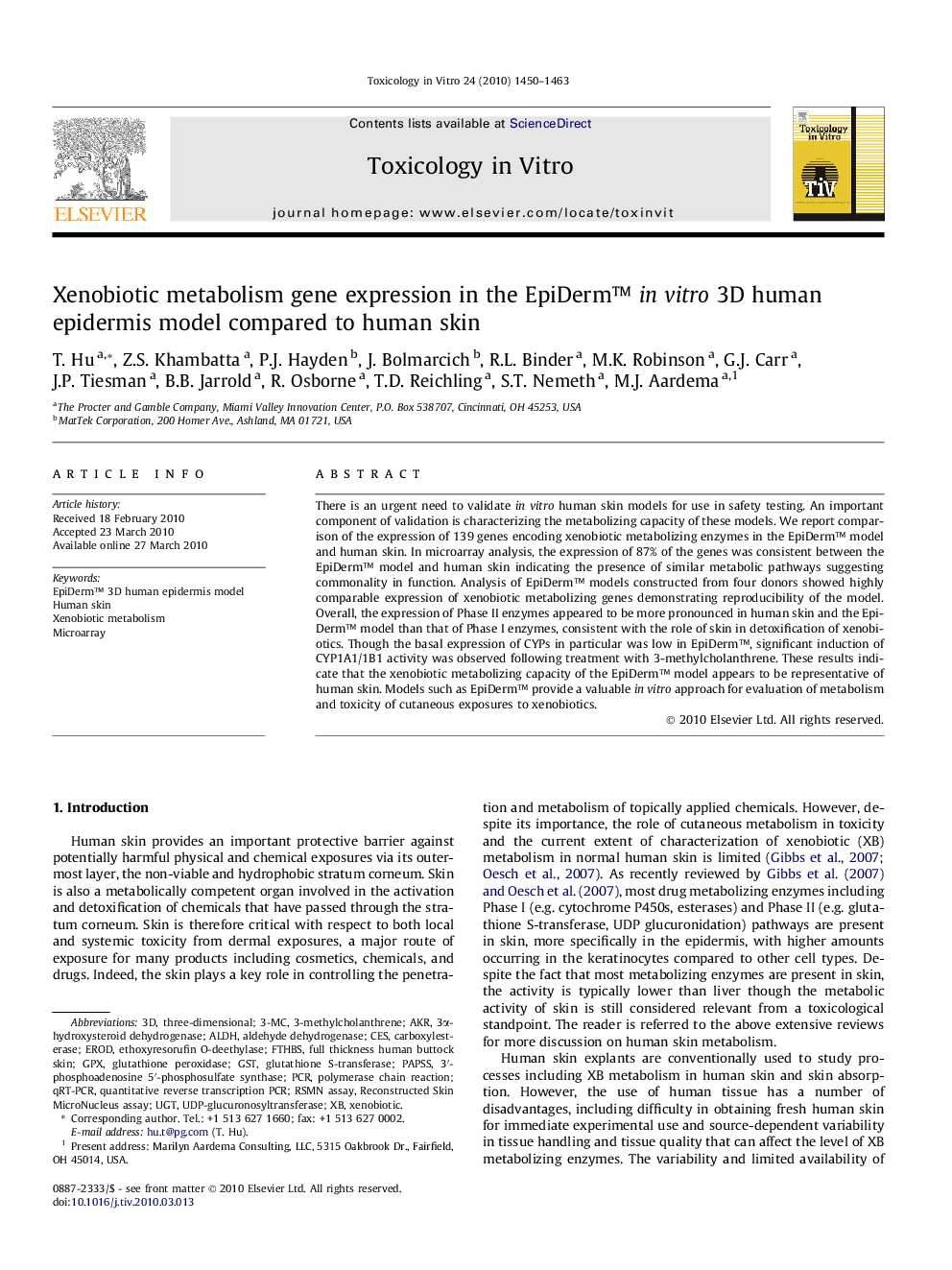| Article ID | Journal | Published Year | Pages | File Type |
|---|---|---|---|---|
| 2603256 | Toxicology in Vitro | 2010 | 14 Pages |
There is an urgent need to validate in vitro human skin models for use in safety testing. An important component of validation is characterizing the metabolizing capacity of these models. We report comparison of the expression of 139 genes encoding xenobiotic metabolizing enzymes in the EpiDerm™ model and human skin. In microarray analysis, the expression of 87% of the genes was consistent between the EpiDerm™ model and human skin indicating the presence of similar metabolic pathways suggesting commonality in function. Analysis of EpiDerm™ models constructed from four donors showed highly comparable expression of xenobiotic metabolizing genes demonstrating reproducibility of the model. Overall, the expression of Phase II enzymes appeared to be more pronounced in human skin and the EpiDerm™ model than that of Phase I enzymes, consistent with the role of skin in detoxification of xenobiotics. Though the basal expression of CYPs in particular was low in EpiDerm™, significant induction of CYP1A1/1B1 activity was observed following treatment with 3-methylcholanthrene. These results indicate that the xenobiotic metabolizing capacity of the EpiDerm™ model appears to be representative of human skin. Models such as EpiDerm™ provide a valuable in vitro approach for evaluation of metabolism and toxicity of cutaneous exposures to xenobiotics.
